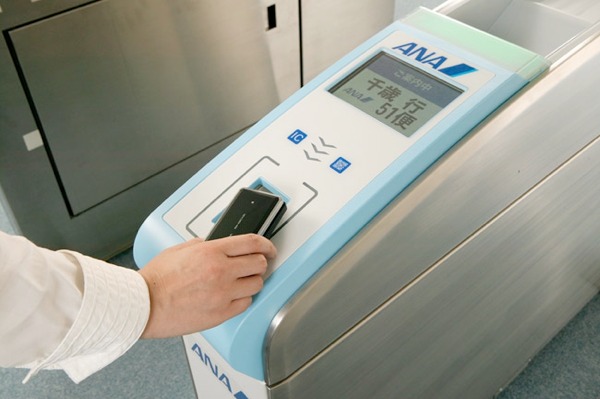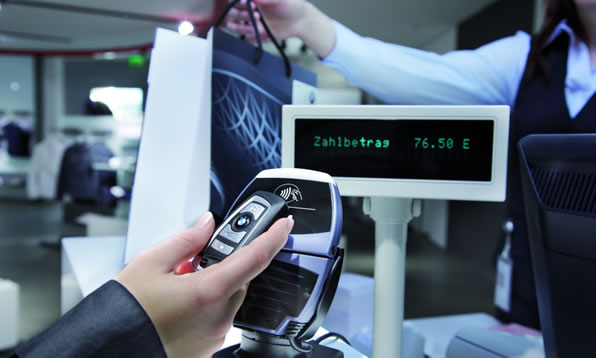The Road to Mass Adoption
Will It Catch On?
We've been hearing about NFC and contact-less mobile payments in the U.S. for years, but it's only been during the past few months that there's been a rush of activity signaling that the technology might finally take off.
One issue is consumer behavior but in many cases that can be fairly easy to overcome. In the case of mobile payments specifically there is bound to be some resistance over security concerns and its up to payment processors to offer the appropriate safeguards. With a few exceptions around the world, most systems are still in trial, but looking at current implementations like MasterCard's PayPass you can get an idea of where things are going: zero liability protection programs, use of encryption technologies and requiring PIN codes for transactions over a certain amount.
The bigger issue is that NFC is not on the majority of phones and NFC readers are not widely available at merchants. This is slowly starting to change but it's not something that will happen overnight, and of course there comes the chicken-and-egg paradox: until more merchants accept contact-less payments there will be limited interest from customers in getting NFC-equipped phones or from manufacturers in selling them, and until you have a significant installed user base of consumer NFC devices, merchants won't be willing to invest in the payment-processing devices.
Big and small players are looking to make money through mobile payments and businesses are starting to take an interest in NFC as a way to improve engagement with customers at points of sale. I think there's a big chance NFC takes off in the next couple of years and we're getting front row seats to see who can make their solutions stick.

Japan's ANA passengers can check in and board local flights by waving a mobile phone to a machine
It's important to note that NFC or NFC-like systems are already widely used in some Asian countries, most notably Japan, which rolled out the first phones with built-in mobile payment chips as far back as July 2004. Today, about half of the country's more than 100 million subscribers have this capability, though some estimates put regular use at just 10%. The country uses a proprietary technology called FeliCa, developed by Sony, but eventually plans to move to the standardized NFC to avoid the higher licensing fees and increased cost of phones and readers.
In the U.S., Europe and several countries throughout the world there are numerous tests and pilot programs being conducted. While conducting research for this article I was hoping to play around with France's NFC implementation in Nice, dubbed Cityzi, but unfortunately several days after activating the service and despite many calls to get it sorted out, it is still not working. It's not clear to me if this is an isolated event but I'm sure many would turn away from the technology if this was their first impression, which is why implementation and execution is so important for adoption.
Nevertheless, this pilot program that's been in effect since mid-2010, has been successful enough that is expanding to 9 more French cities and will be made available in a range of last generation handsets from key providers this year.
Who Is Backing It?
Mobile phone carriers, credit card companies, banks, companies like Google and PayPal, device manufacturers... there are financial gains in store for players across the field and with the hype surrounding NFC growing nobody wants to be left out. In the last few months almost every major mobile carrier in the U.S., banks and credit card companies have either announced plans or have started trialing NFC based payment systems.
PayPal, Google Checkout and Amazon Payments are also said to be working on NFC solutions, while phone makers and point-of-sale terminal vendors are including support for the technology in their latest devices. Here are a few highlights from our recent coverage and stuff that has been covered elsewhere:
- Verizon, AT&T, T-Mobile want to turn your phone into a wallet
- Google officially introduces Android 2.3 and Nexus S
- Starbucks launches largest mobile payment program in the US
- Rumor: Google to test NFC checkout system within four months
- More details on Google's Android mobile payment system
- Microsoft planning NFC mobile payments for Windows Phone 8
- iPhone 5 won't have NFC, say insiders at UK carriers
- RIM, Bank of America partnering up for Mobile Wallet NFC trial
- Google expands NFC check-ins
Some Final Thoughts
Near Field Communication is all about making our daily interactions easier - easier to pay for goods and services, easier to use public transport, easier ticketing for events, easier to interact with businesses, easier to share data between devices. At the heart of the technology is its ease of use, increasing convenience rather than enabling something new.
Most of the talk is focused on mobile payments and that has the potential to be a major driver of adoption. Many companies believe they can boost their average sale amounts by making payments easier and process customer transactions faster, while point-of-sale terminal vendors on the other hand are in for some big sales if contactless payments catch on. But as discussed above there are many other reasons for us users to want NFC too.
Since NFC is based on open standards, different readers will be compatible with various types of NFC-enabled devices like cards, key fobs, or smartphones regardless of vendor. For mobile payments things might be a little more complicated, though. Businesses will have to choose which processing infrastructure to support – as in PayPal, Google Checkout, Visa, MasterCard, and so on – but may be hesitant to make any big investments until they know what platform their customers are likely to use. And the fight for dominion over mobile payments is just about to begin.

It is estimated that one in five smartphones will feature NFC technology by 2014, or almost 300 million NFC-enabled smartphones in three year's time. It will be a while longer until we're able to ditch our keys, wallet, cards and more in favor of a single device to rule it all. And if it ever comes to that point, it remains to be seen if smartphones are the ideal vehicle to accomplish this. It may seem that way today due to their ubiquity, but beyond security concerns I wonder if I'll have to sleep on the porch in the event that my battery dies before coming home.
Jokes aside, NFC is certainly a technology to keep our eyes on as it has the potential to bring a new level of convenience to many aspects of a typical person's daily life. Are you looking forward to it?
